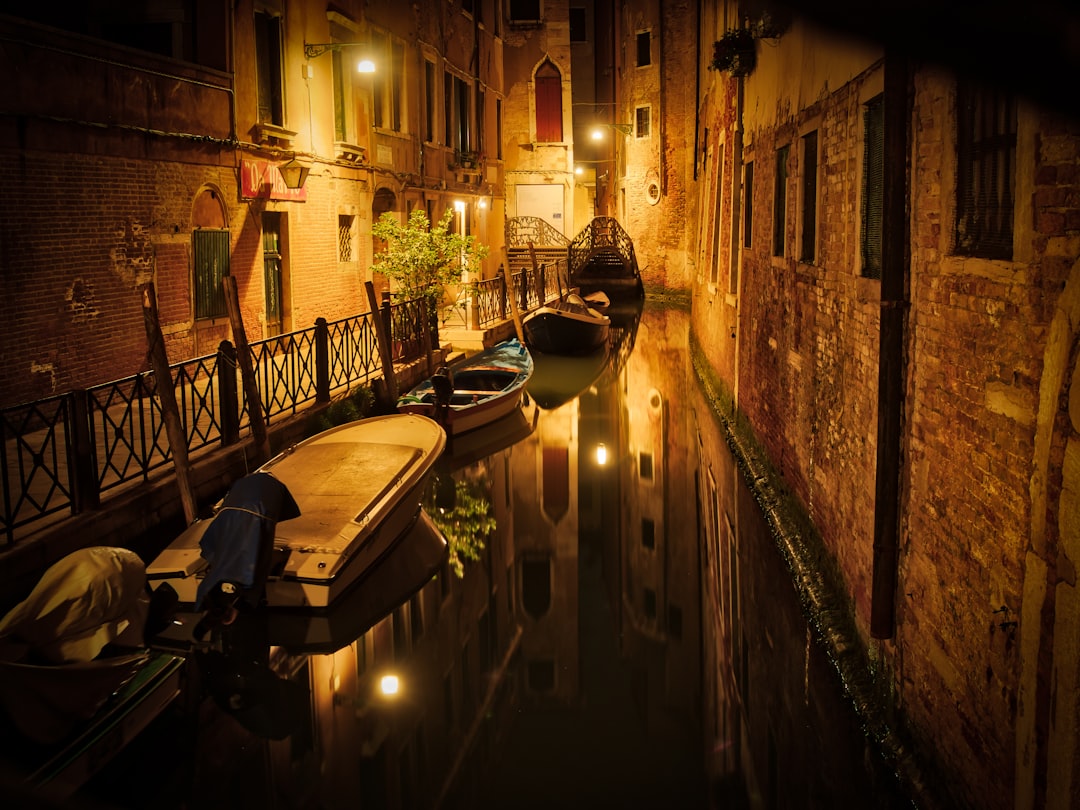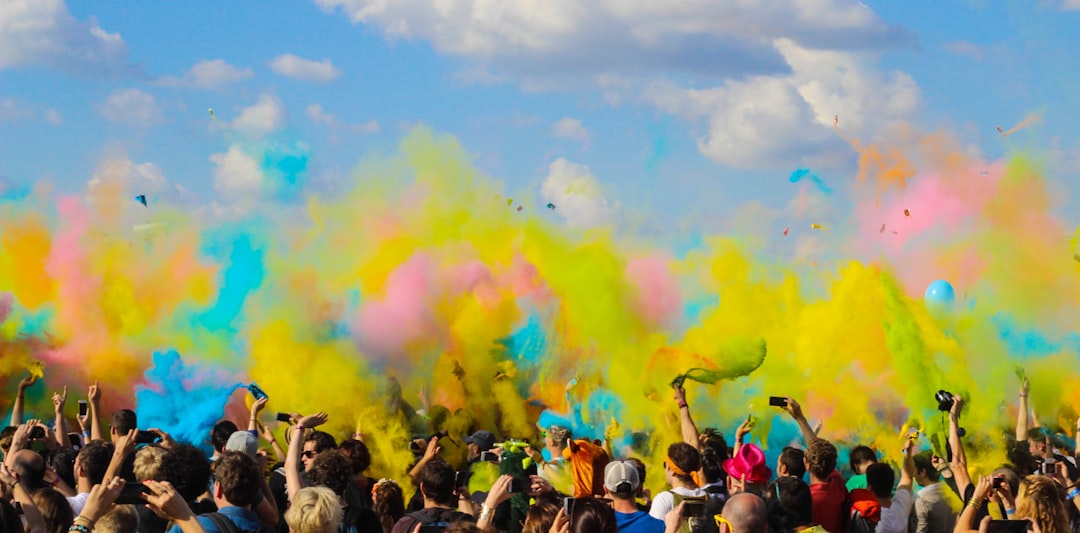Venice’s Annual Feast Honoring the End of the 17th Century Plague
Venice's Annual Feast Honoring the End of the 17th Century Plague - Origins and Significance of the Festa della Salute

The Festa della Salute is rooted in a devastating plague that struck Venice in the 1630s, wiping out nearly a third of the city's population.
In response, the Doge (the chief magistrate of the Venetian Republic) made a vow to the Virgin Mary, promising to build a grand church in her honor if she interceded to stop the plague.
The church's imposing dome and intricate facade have become an iconic symbol of Venice and the Festa della Salute.
During the annual Festa della Salute celebration, thousands of Venetians and visitors traverse a temporary floating bridge across the Grand Canal to reach the Salute Church, a tradition that reflects the city's deep connection to the water that has defined its history.
The Festa della Salute is believed to have its roots in the ancient pagan festival of Saturnalia, which celebrated the winter solstice and the return of the sun.
The feast's timing in late November may be a deliberate attempt to integrate pre-Christian rituals into the Catholic celebration.
What else is in this post?
- Venice's Annual Feast Honoring the End of the 17th Century Plague - Origins and Significance of the Festa della Salute
- Venice's Annual Feast Honoring the End of the 17th Century Plague - The Devastating 17th Century Plague in Venice
- Venice's Annual Feast Honoring the End of the 17th Century Plague - Votive Offerings and the Salute Church
- Venice's Annual Feast Honoring the End of the 17th Century Plague - Concurrent Festivals Marking Venice's Recovery
- Venice's Annual Feast Honoring the End of the 17th Century Plague - The Lasting Legacy of the Festa della Salute
Venice's Annual Feast Honoring the End of the 17th Century Plague - The Devastating 17th Century Plague in Venice
The 17th-century plague in Venice was part of a larger pandemic that began with the Black Death in the 14th century and continued to affect Europe throughout the 17th and 18th centuries.
This outbreak in 1630-1631 was particularly devastating, killing approximately one-third of the city's population.
The concept of quarantine originated in 14th-century Venice during repeated outbreaks of the plague.
The word "quarantine" comes from the Italian "quaranta giorni," meaning 40 days, reflecting the period of isolation imposed on ships and individuals to prevent the spread of the disease.
The 1630-1631 plague outbreak was so severe that it weakened the foundations of the Republic of Venice, paving the way for Napoleon to overthrow the city in 1797.
This event had a significant impact on the political and social landscape of Venice.
The plague had a devastating impact on the population of Venice, with mortality rates as high as 50% in certain areas.
The lack of effective treatments and poor sanitation at the time contributed to the rapid spread of the disease.
The Festa della Salute, an annual feast honoring the end of the 17th-century plague, is believed to have its roots in the ancient pagan festival of Saturnalia, which celebrated the winter solstice and the return of the sun.
This integration of pre-Christian rituals into the Catholic celebration reflects the rich cultural heritage of Venice.
Venice's Annual Feast Honoring the End of the 17th Century Plague - Votive Offerings and the Salute Church

The tradition of votive offerings is well-documented, with evidence of votive paintings, statues, and other forms of offerings dating back to ancient civilizations.
The Catholic Church has recognized the tradition of votive offerings, with the Catholic Encyclopedia defining them as "things vowed or dedicated to God or a saint and in consequence looked upon as set apart by this act of consecration."
Examples of votive offerings in the Catholic Church include the candlelight and vigil lights, as well as the production of votive paintings and statues.
The Salute Church was constructed as a votive offering, and its imposing Baroque-style architecture and iconic dome have become a recognizable landmark in Venice.
The annual Festa della Salute celebration in Venice, which honors the end of the 17th-century plague, may have its roots in the ancient pagan festival of Saturnalia, which celebrated the winter solstice and the return of the sun.
Venice's Annual Feast Honoring the End of the 17th Century Plague - Concurrent Festivals Marking Venice's Recovery

The Festa della Salute is believed to have its roots in the ancient pagan festival of Saturnalia, which celebrated the winter solstice and the return of the sun, reflecting the city's deep connection to its pre-Christian past.
The concept of quarantine originated in 14th-century Venice during repeated outbreaks of the plague, with the word "quarantine" coming from the Italian "quaranta giorni," meaning 40 days, reflecting the period of isolation imposed on ships and individuals.
The 1630-1631 plague outbreak in Venice was so severe that it weakened the foundations of the Republic of Venice, paving the way for Napoleon to overthrow the city in 1797, having a significant impact on the political and social landscape of Venice.
The Festa del Redentore, held on the third weekend of July, commemorates the liberation of Venice from the Ottoman Empire in 1517, featuring traditional music, dance, and food, as well as a grand fireworks display over the Giudecca Canal.
The Carnevale di Venezia, one of the most famous festivals in the world, dates back almost 1,000 years and is closely linked to the production of Venetian masks and masked balls, with the first recorded Carnival taking place in 1094.
The Festa della Sensa, a historical celebration on water, typically held on the Sunday after Ascension Day, marks the wedding of the sea, symbolizing the city's connection to the water that has defined its history.
The Venice Film Festival, held annually, is one of the most prestigious film festivals in the world, with its first non-competitive edition held in 1932, showcasing the city's rich cultural heritage and its connection to the arts.
The city of Venice is built on more than 100 small islands, with over 400 bridges connecting them, making it a unique and fascinating urban landscape that is reflected in its festivals and celebrations.
Venice's Annual Feast Honoring the End of the 17th Century Plague - The Lasting Legacy of the Festa della Salute
The Festa della Salute is a testament to the close relationship between Venice and its traditions, with the Madonna della Salute believed to have freed the city from the grip of the plague in 1630.
The celebration includes a pilgrimage to the Basilica of Santa Maria della Salute, where the icon of the Madonna della Salute is kept, and a traditional Venetian food and drink feast.
The Festa della Salute honors the end of the 17th-century plague that wiped out nearly a third of the city's population, and the Doge's vow to build a grand church in honor of the Virgin Mary if she interceded to stop the plague.
The Salute Church's imposing dome and intricate facade have become an iconic symbol of Venice and the Festa della Salute, with thousands of Venetians and visitors traversing a temporary floating bridge across the Grand Canal to reach the church during the celebration.
The Festa della Salute is believed to have its roots in the ancient pagan festival of Saturnalia, which celebrated the winter solstice and the return of the sun, reflecting the city's deep connection to its pre-Christian past.
The concept of quarantine originated in 14th-century Venice during repeated outbreaks of the plague, with the word "quarantine" coming from the Italian "quaranta giorni," meaning 40 days, reflecting the period of isolation imposed on ships and individuals.
The Festa della Salute is a unique and special celebration in Venice, with a mix of sacred and profane elements, uniting the spiritual and the secular in a jewel of Baroque art.
The 1630-1631 plague outbreak was so severe that it weakened the foundations of the Republic of Venice, paving the way for Napoleon to overthrow the city in 1797, having a significant impact on the political and social landscape of Venice.
The Festa della Salute is one of several festivals marking Venice's recovery, along with the Festa del Redentore, Carnevale di Venezia, Festa della Sensa, and the Venice Film Festival, showcasing the city's rich cultural heritage and its connection to the arts.
